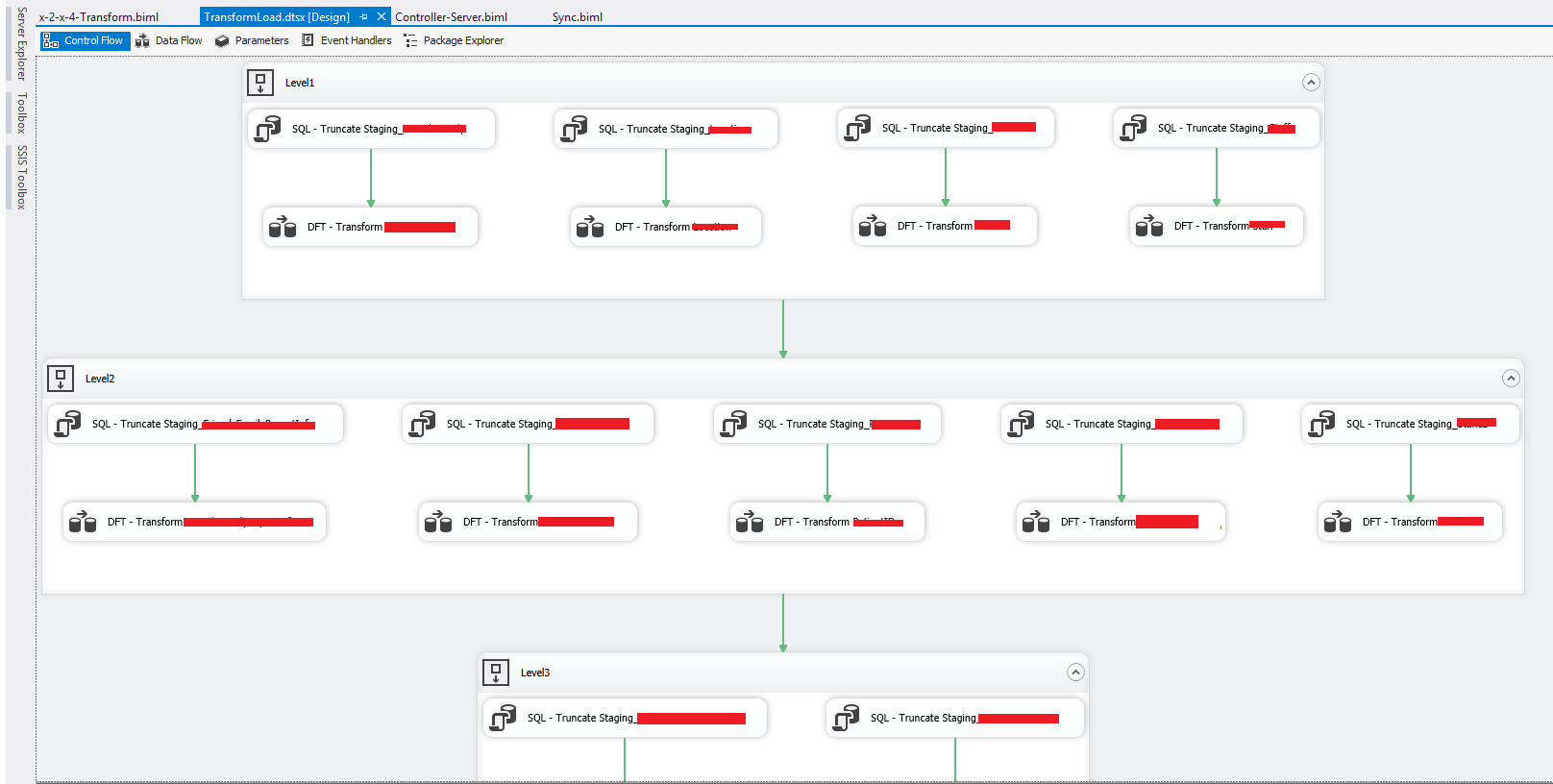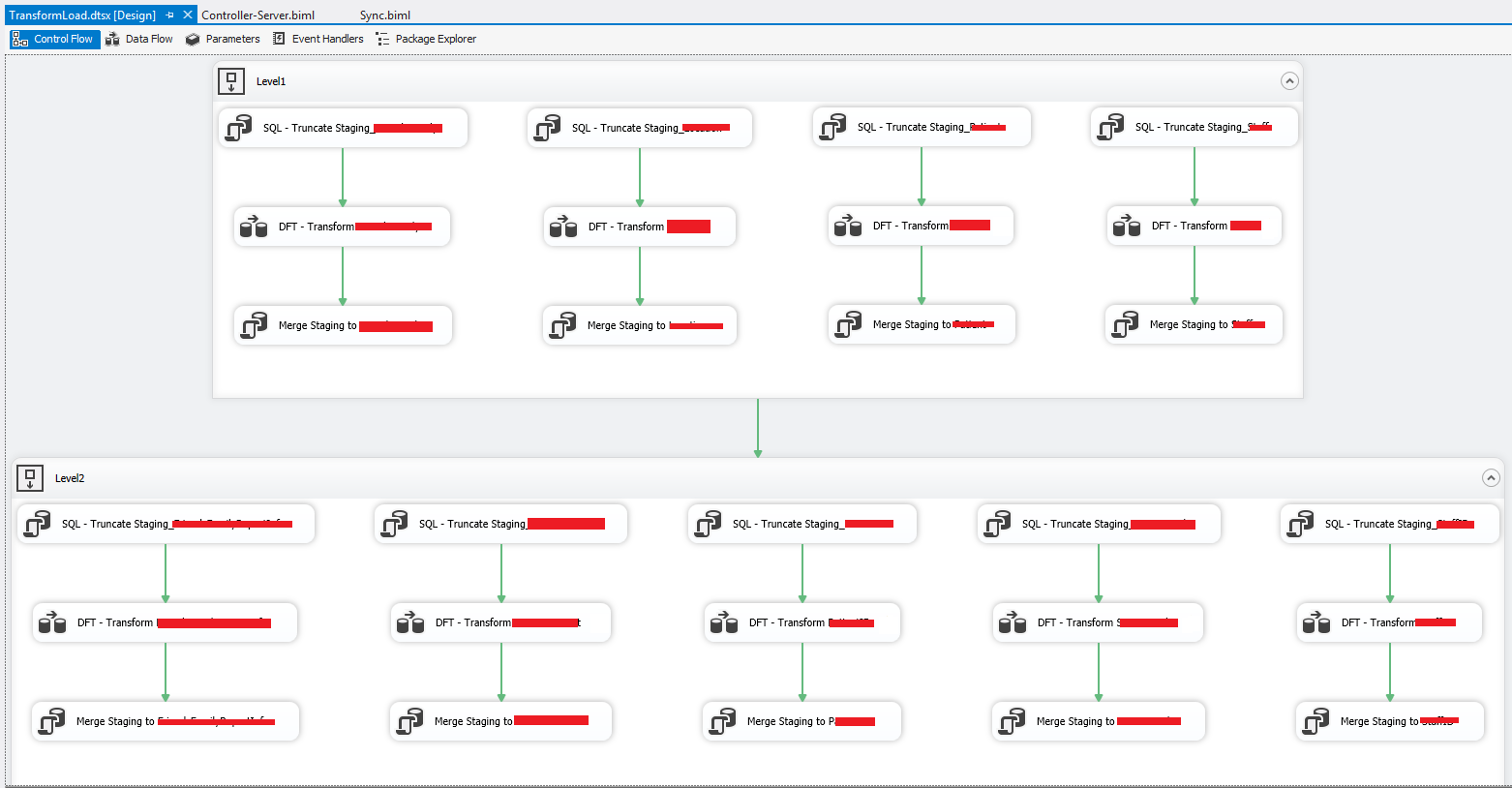More Reasons to Adopt Biml
SSIS packages aren’t backwards compatible - that means if you start building packages targeting SQL Server 2012 and then find out you need to also support and earlier version (like what happened to me this week), you will need to start over. However, if you used Biml to generate your packages you could spin up an instance of SQL Server 2008 in Azure, load your Biml project in BIDS and regenerate your packages targeting a different version.
You can change quickly - I recently found myself in the situation where I had developed an Extract, Transform and Load package and when it came to test them realize that they were wrong. I need to load data after it had been transformed because down stream Transforms depended on data being loaded. Here’s a picture
What I had to do was combine the Transform and Load packages into a single one. I could have gone through and copy, pasted, joined up and fixed any problems for each and every one (there were about 30+ transforms), but that would have taken a while and been a very boring task. Instead I made a very minor change to my Biml package and then regenerated the package.
You can refactor quickly - this is in a similar vein to the point above. In another project I did my development against SQL Server 2012 when it came time to deploy I found out the client site I had to deploy to was still running SQL Server 2008. Which meant I had to say good bye to the Project Deployment model, along with the nice and easy configuration experience you get with 2012 and go back to using XML configuration files - this was a bit of a pain to figure out. Given that I had about 40 packges, the effort of going through each one to enable Package Configurations would have been immense (and boring), instead after I figured out how to do it in Biml all I needed to do was regenerate the packages.
Drag and drop doesn’t scale - it works fine for small ad-hoc packages that you end up throwing away, however I strongly hold the view that if you’re doing any serious development, building packages by hand just isn’t going to scale. This is especially true when all you’re really doing is implementing design patterns. I don’t remember the last time I dragged and dropped something in SSDT BI, and I have been doing a lot of SSIS development recently!
In conclusion and the main reason you should adopt Biml, your time scales better. All the things I have outlined above I could have done by hand, but it would have taken me a while and would have been boring. I probably would have made mistakes along the way too. Instead, by using Biml to create the packages I can concentrate on more important things (like writing this blog post, automating our database deploytment or automating our release process).


🍪 I use Disqus for comments
Because Disqus requires cookies this site doesn't automatically load comments.
I don't mind about cookies - Show me the comments from now on (and set a cookie to remember my preference)